Chaos Drop #5: Genocide, Big Balls, 324 km/h and Spiritual Bypass
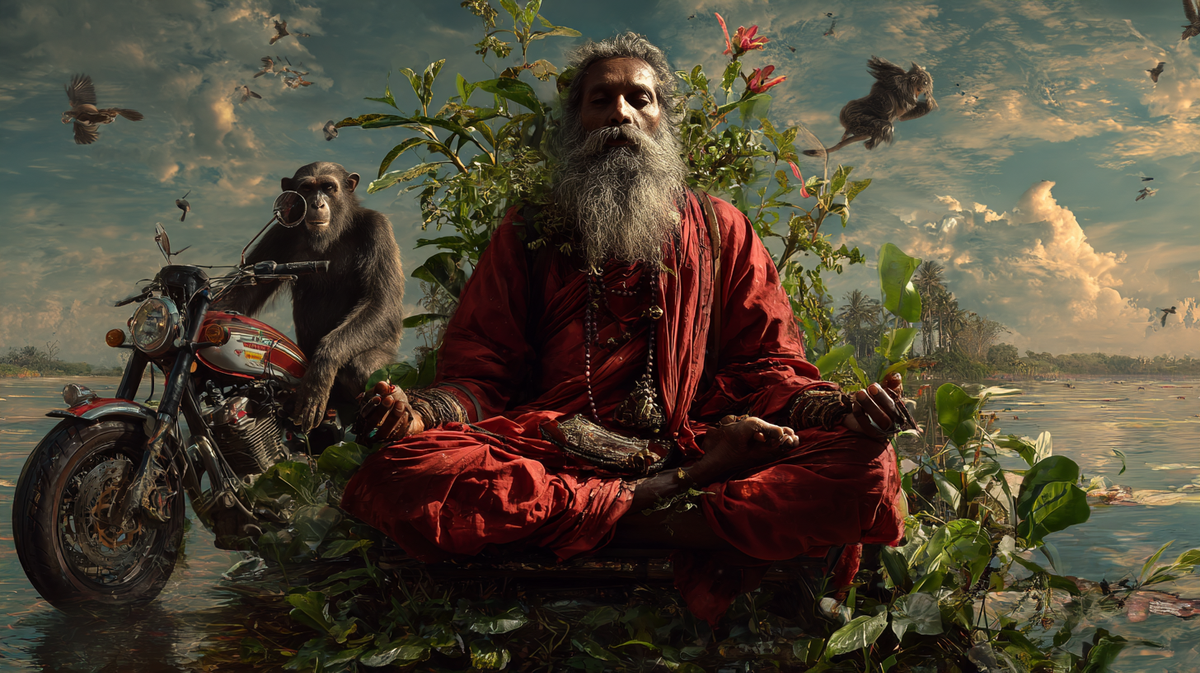
First, it took me ages to get rolling with this Chaos Drop, and then in the end, it sped up so much that I had to cut out some of the fun stuff for the next one. This one is 3K+ words. Hopefully, some of them will make sense to you (and maybe even speak to you).
Thanks for pestering me about when the next one is dropping. You pushed me over the edge… in a good way.
In the meantime, I’ve been diving into some deep dives on specific topics, hoping to get those out too. Might happen… or might never.
Genocide and smashing babies against trees, racing 300 km/h through narrow streets, moving a whole city, some spicy statistics, and the balls of evolutionary biology. Quite the chaos (you might enjoy).
By the way: welcome to the first English Chaos Drop!
Why the change? Most of the people I’m in touch with aren’t Slovak speakers. And half of those are Czech. And, to be honest, Czech people seem to have to put in real effort to sync really similar words from Slovak to Czech. And that effort often time is not enough. But I kind of get it. What I find the most difficult, personally, are the names of foods, fruits, and veggies in Czech. Vole.
Lost? Three words and you can be found anywhere in the world.
You probably know about GPS coordinates (GPS, by the way, stands for Global Positioning System). But have you heard about a positioning system that defines your spot on a map using just three unique words? In this system, the entire world is divided into 3×3 meter squares, and every single square has its own unique combination of three words. It’s actually pretty handy sometimes it could be easier to understand and share over the phone, or, for example, when using it with small children. Try it out here: https://what3words.com/
The whole world is divided to 57 trillion 3-meter by 3-meter squares. Kray.

Air pushed into body, skin peeled away from muscle
I keep stumbling across the weirdest injuries, and here’s another gem.
In 2011, a man survived an accident where he fell onto the end of a high-pressure air hose, which pierced his buttock and blasted air into his body at extreme pressure. He was literally inflated to almost twice his normal size, with the air separating his skin from his muscles.
The 48-year-old had been working around his truck when he slipped onto the nozzle of its high-pressure air supply. His scream alerted coworkers, who shut off the air and pulled him off the nozzle. It took an hour for paramedics to reach the site, since all nearby ambulances and even the helicopter were busy.
When the paramedics inserted a needle, the air pressure inside his body pushed it back out. Doctors later explained that the air had filled his abdomen and chest, as well as the spaces around his heart, lungs, and even behind his eyelids. It had separated his fat from his muscles and compressed his heart. They had to insert a hose through his ribs just to get air into his lungs.
In the end, the air had to leave the natural way, which meant an epic case of flatulence. It took three days for him to deflate back to normal size, and he was discharged to continue recovering at home.
Still, my favorite part? The headline of the original article about this incident: Man Enjoys Inflated Reputation After Impaled on High Pressure Air Hose
Pol Pot's cremation
I recently came across a picture of Pol Pot’s cremation that I had never seen before. I once had the chance to travel to Cambodia, and it remains one of the most fascinating places I have ever visited. Their gastronomy is incredibly rich, and they respect and creatively use insects in their food. For example ants to add acidity to salads, and you can even find these dishes in upscale restaurants.
In Cambodia, I met some of the kindest people I have ever encountered, yet the relatively recent history of the Khmer Rouge could still be felt when I visited in 2018.
If you have no idea about the atrocities that happened in Cambodia, let me give you a little context. This picture of Pol Pot’s cremation sparked my curiosity, and I found myself revisiting my old travel photos and reading through the history again.
Pol Pot was the leader of Cambodia’s Khmer Rouge and served as prime minister from 1976 to 1979. A former schoolteacher turned revolutionary, he orchestrated one of the 20th century’s worst genocides, aiming to create a classless agrarian society through mass executions, forced labor, and starvation. About a quarter of Cambodia’s population was killed in just four years.
So it is no surprise that his cremation looked exactly as it does in the photo below.
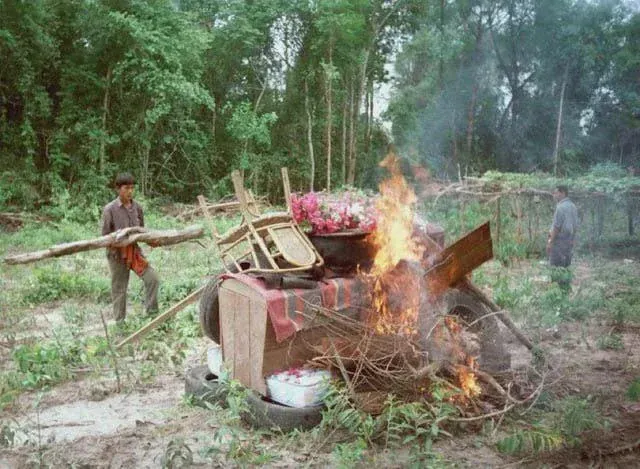
Pol Pot's reign of terror in Cambodia
In 1975, Pol Pot’s Khmer Rouge seized Cambodia and immediately emptied cities at gunpoint, forcing millions into the countryside in a death march where the sick, elderly, and children collapsed in the streets. The regime outlawed money, religion, education, and even family life, declaring anyone with glasses, foreign language skills, or “intellectual” traits an enemy of the revolution, executed without trial. Schools became torture centers, where prisoners tortured before being killed.
Pol Pot’s ideology was an extreme, violent interpretation of Maoist communism, fused with his own radical vision for a self-sufficient, purely agrarian Cambodia. He believed that cities, modern technology, intellectuals, religion, and foreign influence had “corrupted” the country.
His goal was to wipe Cambodia’s history clean - what he called Year Zero -and rebuild it as a classless, rural utopia made up entirely of peasant farmers. To achieve this, the Khmer Rouge sought to eliminate anyone who might oppose or even question them: educated people, professionals, religious leaders, ethnic minorities, and anyone tied to the old society. This obsession with ideological purity justified, in their eyes, mass executions, forced labor, and starvation as necessary “tools” to reshape the nation.
Across the country, the killing fields overflowed. Victims were beaten with farm tools to save bullets, babies were smashed against trees. Starvation, disease, and exhaustion claimed countless others forced into backbreaking rural labor. By 1979, an estimated 1.7–2 million people, about one-quarter of Cambodia’s population, were dead, leaving behind one of the most chilling genocides of the 20th century.
Angkor Wat
Angkor Wat was the main goal of my visit to Cambodia. It is the world’s largest religious monument, built in the early 12th century in Cambodia. Originally a Hindu temple, it later became a Buddhist temple, and today it stands as the country’s most iconic symbol.
Angkor Wat is both a UNESCO World Heritage site and a place of deep spiritual and cultural pride for Cambodians. I dug up some photos from this quick stop, which you can see below.
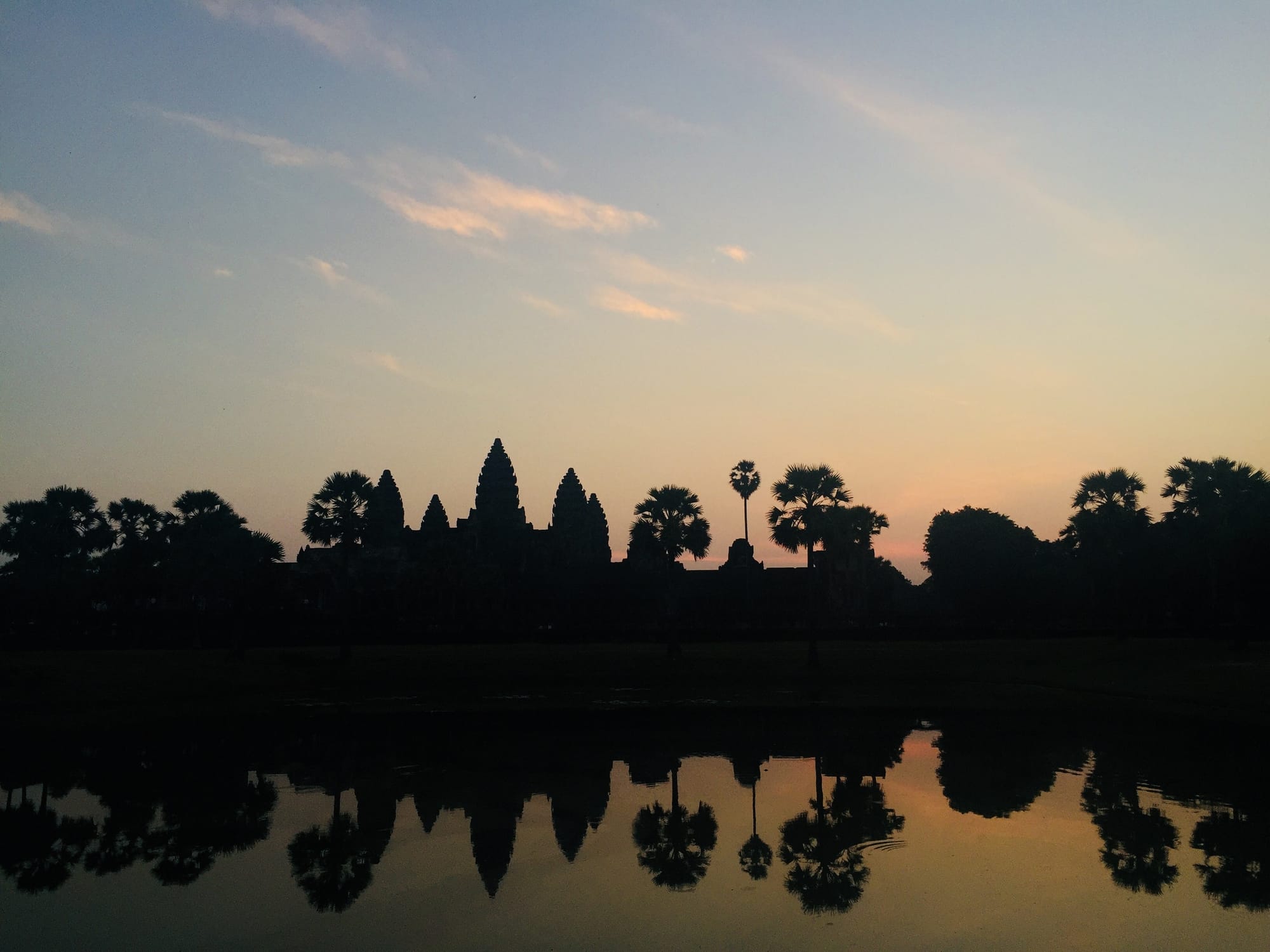
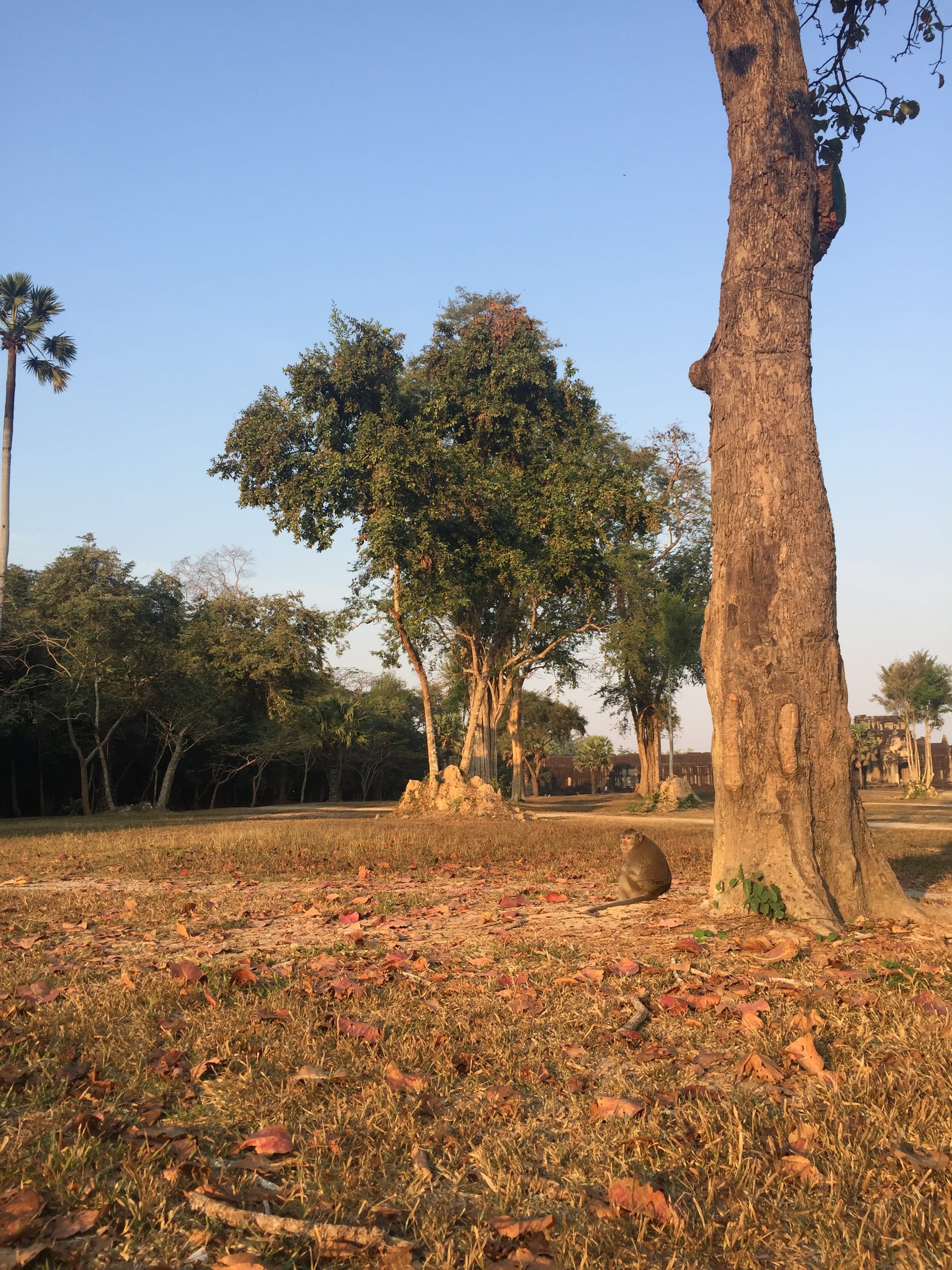
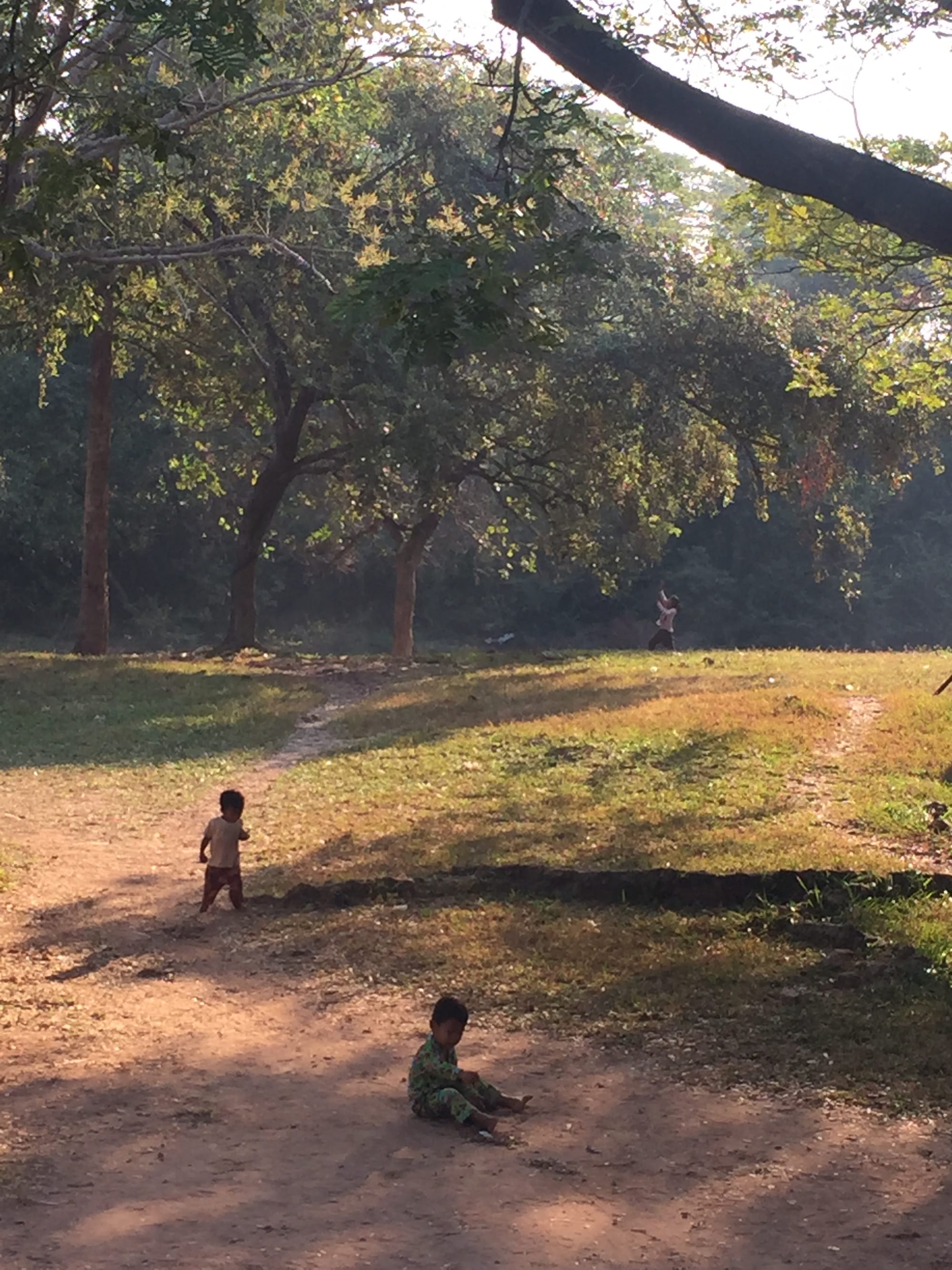
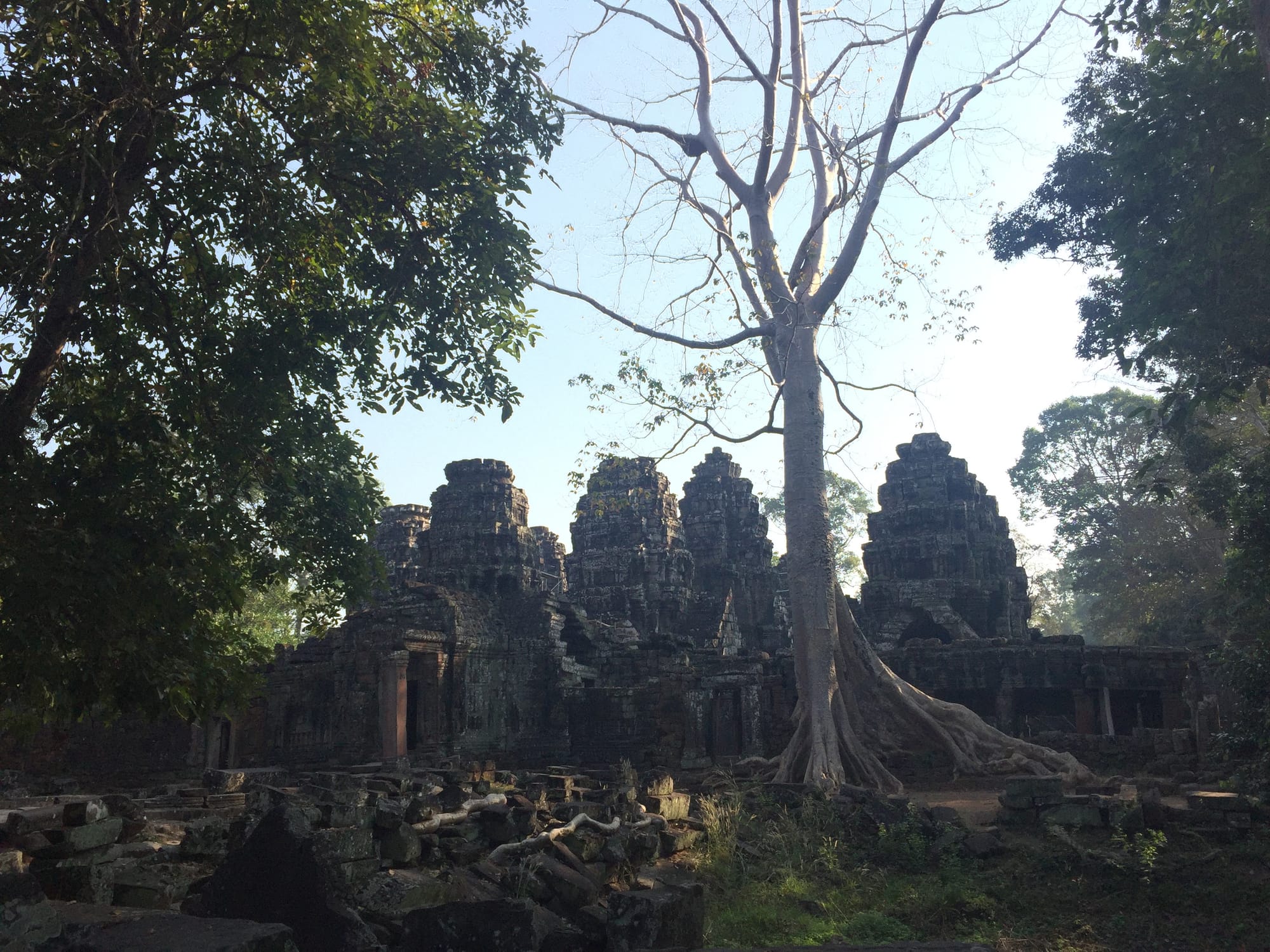
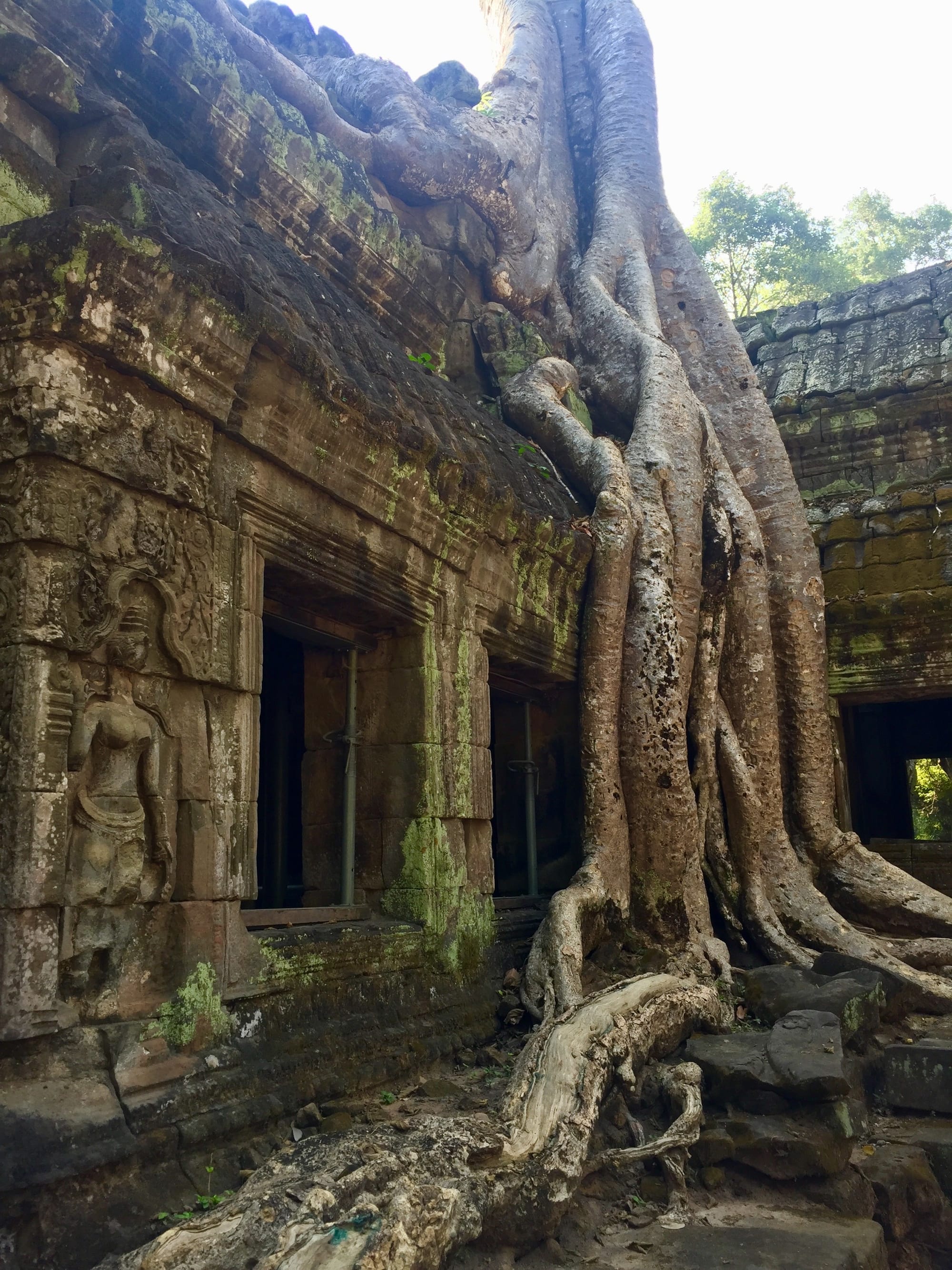

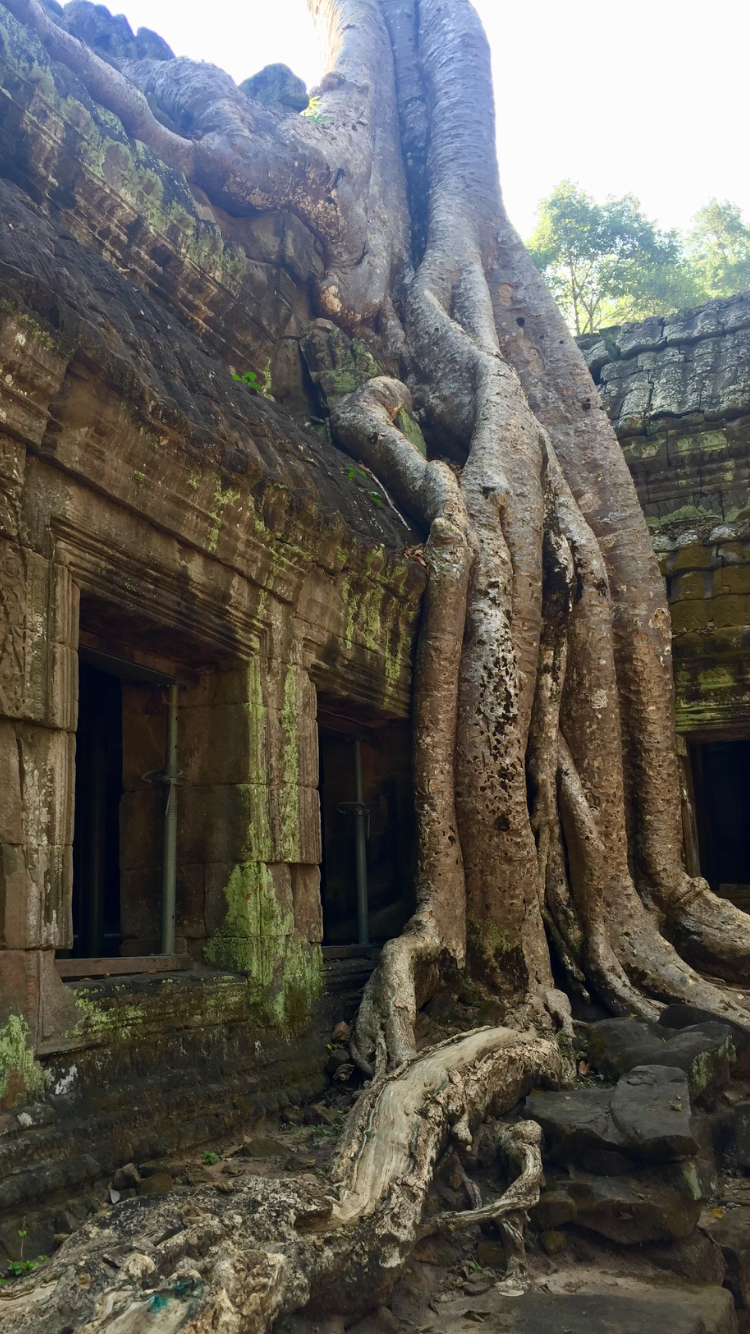
Angkor Wat, 2018
Crazy race of Isle of Man TT
The Isle of Man TT is often called the most dangerous motorcycle race in the world. It is a two-week festival of speed and mortality that has been held on a small island between England and Ireland since 1907. Riders "fly" through 60.72 kilometres of narrow public roads at speeds over 320 km/h, threading between stone walls, lamp posts, and village shops, with no run-off and no forgiveness for mistakes.
Even the smallest lapse in focus can be fatal. Deaths are common, with more than 150 riders losing their lives in the TT’s history, and more than 260 on similar races held on the island. Remarkably, 2024 and 2025 were consecutive years with no fatalities during the race. The last time that happened was in 2012, 2001, and 1982.
Watch this video for a while, and you will understand:
Comments under videos are golden as well:
"Forget winning, even surviving this race would be the greatest achievement in a man's life."
"Leaving 10 minutes late, arriving 20 minutes early"
(article continues after the lock, sign up for free)
Moving a whole city in Sweden
Kiruna is built around one of the world’s largest iron ore mines. Decades of excavation left vast underground cavities, and by the early 2000s, geologists warned that parts of the town were literally sinking.
Rather than abandon it, Sweden began physically relocating the town, including buildings, streets, and even its iconic church, three kilometers east. Some historic structures were lifted and rolled to their new locations, while others were rebuilt from scratch.
Watch an older VICE video about it:
You love Cilantro (coriander) or it tastes like soap?
Ever wondered why some people can’t get enough of cilantro while others swear it tastes like soap? The answer is in your DNA. A specific gene makes you sensitive to certain aldehydes, the same chemical compounds that give cilantro its bright, citrusy aroma and that are also found in soaps and cleaning agents. If you have the “soapy” variant of this gene, your nose sends your brain a completely different message about cilantro’s flavor.
This genetic mutation is surprisingly common. Around 10% of people of European descent and up to 20% in some Middle Eastern populations carry the soapy-taste variant.
But here’s the twist: Even if you have the gene, repeated exposure to cilantro in different cuisines and dishes can retrain your brain to enjoy it. And that might be worth eating soap (tasting stuff for a while). Personally, I am glad I do not have that gene.
Viktor Frankl's Inverse Law
Frankl wrote in his book Man’s Search for Meaning, “When a man can’t find a deep sense of meaning, they distract themselves with pleasure.” You can see this in people chasing dopamine hits, short-term happiness, relationships, drugs, social media, junk food.
But some face the opposite problem. When someone can’t find a deep sense of pleasure, they distract themselves with meaning. If joy, ease, and playfulness do not come naturally, it is tempting to live only for hard goals and delayed rewards. From the outside, it can look like virtue. In truth, it is often a way to avoid admitting that happiness feels out of reach, so you keep promising yourself it will arrive tomorrow.
It is a good reminder that balance is needed here too, between meaning and pleasure, between purpose and joy
Future you is watching you trough your memories
I hope he or she will have fond memories and will be thankful. “Future you is watching you through your memories.”
Tragedy + time = comedy
Tragedy plus time equals comedy. It is true, though time works best when paired with honest self-reflection. Give yourself space to heal, to work on your inner world, and you begin to see your past struggles from a different angle. With distance, perspective sharpens.
The crises that once felt overwhelming start to shrink in scale, almost absurd in hindsight. You find yourself laughing at what once kept you awake at night, not because the pain was unreal, but because you have grown past it. That is the quiet magic of time and introspection. It turns your heaviest burdens into stories you can tell with a smile.
Small Caribbean Island riding the AI wave
Anguilla is a small Caribbean island and British Overseas Territory, located east of Puerto Rico and the Virgin Islands, and just north of Saint Martin

Nearly 25% of the revenue of this small island of 15 000 people comes from the .ai domain, that is popular with AI startups.
Ever noticed those quirky little endings on website addresses, like .ai, .to, or .io? They’re called top-level domains (TLDs), and many are actually country codes. .ai belongs to Anguilla, .to to Tonga, and .io to the British Indian Ocean Territory — though in practice, startups, tech companies use them for their double meaning (“AI” for artificial intelligence, “IO” for input/output, “TO” for call-to-action links).
Not all endings are tied to a country, though. Classics like .com, .net, and .org are “generic” TLDs, originally meant for specific types of organizations but now open to everyone.
Do you want to have sex with me?
Imagine an attractive person walking up to someone of the opposite sex and asking, in a non-creepy way, if they would like to have sex. What are the chances of the person saying yes? Well, it depends on who is asking. In one study, 0% of women said yes and around 25% of men said no.
This study, by Clark and Hatfield in 1989 in the United States, had attractive people on a university campus ask three questions:
- Would you go out with me tonight?
- Would you come over to my apartment tonight?
- Would you go to bed with me tonight?
Results:
- Go to bed: 0% of women, 75% of men
- Apartment: 6% of women, 69% of men
- Date: roughly 50/50
The study was replicated to some extent in 2024, with the gender differences still present. However, men were less willing to go straight to bed, and the acceptance rate dropped from roughly 70% to around 30%.
A 2011 study by Terri Conley challenged the idea that women’s lower acceptance of casual sex was due to lower sexual interest. Based on her research, women say no not because they do not want sex, but because of contextual risks and perceptions: safety concerns, stigma, doubts about pleasure, and social scripts.
When women are offered casual sex by someone they trust, find attractive, and expect to be good in bed, the gender gap in willingness shrinks dramatically. In other words, the “0% acceptance” in Clark and Hatfield’s study says as much about the situation as it does about desire. Girls wanna have fun too. Just are smarter about it.
Big balls, promiscuous females
How big a male’s testes are can reveal a lot about evolutionary biology and the mating habits of a species. The key is not the absolute size, but the size relative to total body weight.
Male testes as a percentage of body weight:
- Gorillas: 0.018%
- Orangutans: 0.048%
- Men: 0.079%
- Chimpanzees: 0.269% (more than three times that of men)
Men’s relatively large testes provide evidence (or suggest?) that, in human evolutionary history, women sometimes had sex with more than one man within a few days. The cultural saying that a man has “big balls” might carry a hint of evolutionary truth.
Still, these findings suggest our ancestors rarely reached the chimpanzee’s extreme levels of promiscuity.
Why did nature decide that bigger testicles can be better?
In many mammals, the relative size of the testes reflects the species’ mating system. The main driver is sperm competition: when females mate with multiple males in a short period, sperm from different males literally compete inside her reproductive tract to fertilize the egg.
Larger testes can produce more sperm per day. In species where females mate with multiple males during their fertile window, producing a higher volume of sperm boosts the odds of winning that race. Some species with larger testes also produce sperm with slightly faster swimming speeds or more seminal fluid, which can help flush out rival sperm or create a more favorable environment for their own.
Low sperm competition species, like gorillas, have small testes relative to body size because dominant males monopolize mates by physical dominance, so there is little need to produce vast amounts of sperm.
High sperm competition species, like chimpanzees, have very large testes relative to body size because females mate with multiple males, making sperm quantity as important as physical dominance.
Humans fall somewhere in between. Our relatively large testes compared to gorillas suggest some historical female promiscuity, but nowhere near chimpanzee levels. (Currently I'm reading The Evolution of Desire, David M. Buss, so expect more spicy stuff like this - which is from the mentioned book)
Choose what you do with your attention
These days, we’re swimming in information - articles, videos, messages, notifications, all competing for a slice of our attention. The more there is, the less we have to give. That’s why paying attention isn’t just automatic anymore, it’s a choice. The trick is learning to spend it wisely, so we’re feeding our minds with what truly matters instead of getting pulled under by the noise. In a world overflowing with information, attention is your most valuable currency - spend it wisely. Rethink your scrolling, social media consumption, quality of conversations and other media you consume.
A wealth of information creates a poverty of attention and a need to allocate that attention efficiently among the overabundance of information sources that might consume it. - Herbert A. Simon. Found in The Great Mental Models 4
Watch out for Spiritual Bypass
Spiritual bypass is when someone uses spiritual ideas or practices to avoid dealing with unresolved emotional wounds, personal issues, or uncomfortable realities. Instead of facing pain head-on, they hide behind affirmations, meditation, or “positive vibes only” as a way to sidestep real healing work.
Spiritual bypass is when we use “good vibes” and spiritual talk to dodge real emotional work. It’s the “Everything happens for a reason” mask we wear instead of facing grief, fear, or anger.
Imagine someone going through a messy breakup. Instead of processing their grief, they insist “Everything happens for a reason” and immediately bury themselves in yoga classes and manifesting their “next soulmate,” without ever acknowledging their heartbreak, patterns, or accountability. On the surface, they look “zen,” but underneath, the pain is still there. Unaddressed and waiting.
Recognising spiritual bypass helps you spot when “spiritual growth” is actually emotional avoidance. Left unchecked, it can create a false sense of progress while old wounds quietly shape your choices, relationships, and mental health. Knowing the concept lets you balance spiritual tools with the deeper, sometimes messy, work of self-reflection, therapy, or honest conversations.
It feels like growth, but it’s really avoidance. True healing isn’t just meditating pain away — it’s sitting with it, learning from it, and letting it shape you into someone wiser, not just calmer.
F1 in person @ Spa-Francorchamps in Belgium
I had the opportunity to attend an F1 race in person, and not just any race — but at the historic circuit in Spa, Belgium. Thanks to an invitation from Sazka in Czechia, which is connected to Allwyn (one of McLaren Racing’s main sponsors), I got behind-the-scenes access with full VIP treatment. Talk about good timing.
The Circuit de Spa-Francorchamps is one of the most legendary racetracks in the world, and part of its fame comes from the weather. Nestled in the Ardennes forest, the track is so large (over 7 km / 4.35 miles) that it can be pouring rain on one section while the sun is shining on another. This makes races notoriously unpredictable, with drivers battling not just each other but also rapidly changing conditions.
It is also home to Eau Rouge–Raidillon, a high-speed uphill corner complex so iconic that F1 drivers talk about it with equal parts fear and love.
As you can see from the pictures, where I pose like a good kid on a school trip, I made the most of it. A track tour, time in the garage during the sprint race listening in to the team radio, meeting Oscar Piastri, chatting with Zak Brown, walking the track, enjoying great catering… I had a blast.
Some fun facts below the photos:

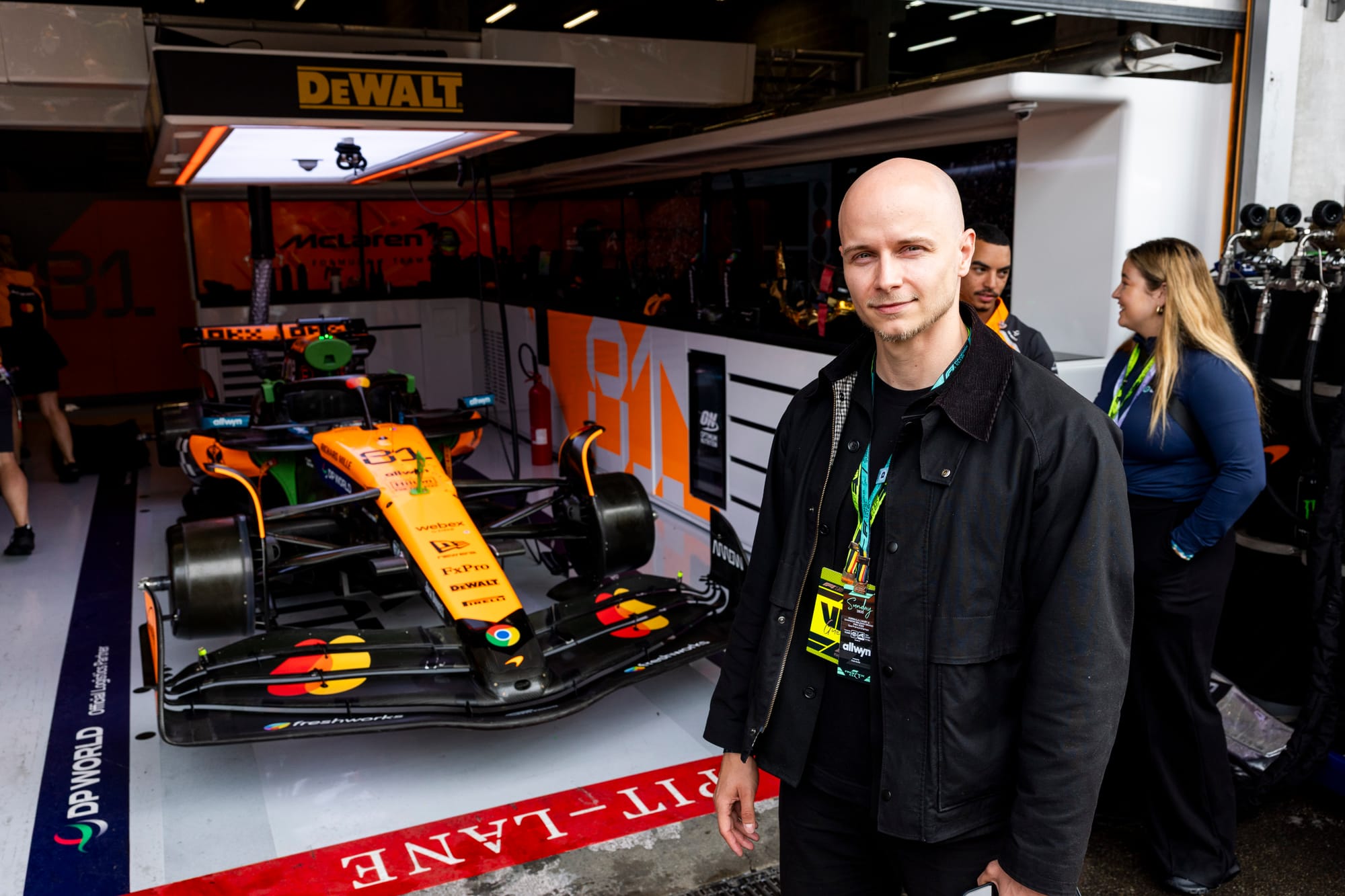



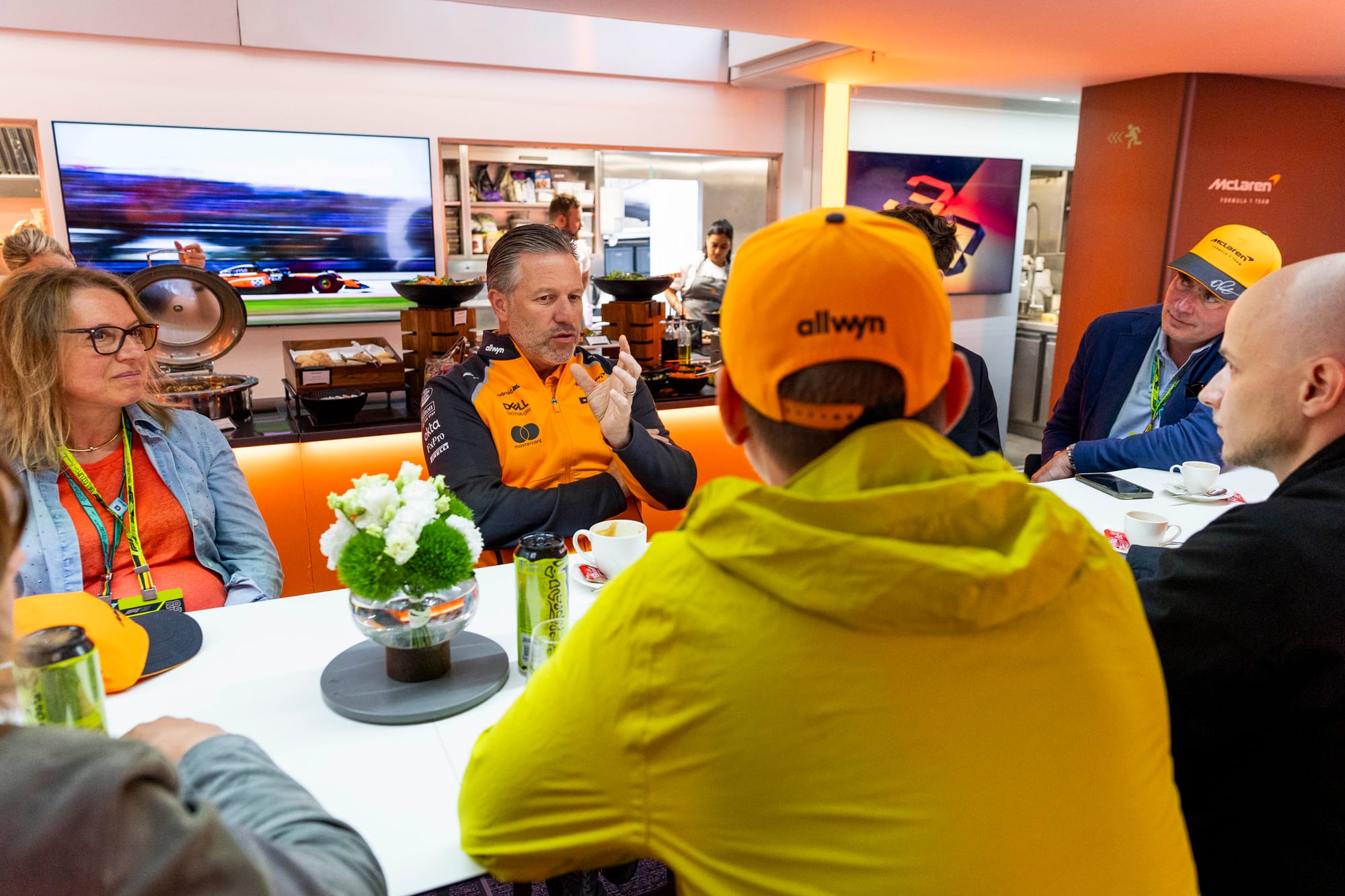
How Zwei Photoagency
- Nearly 400K people attend the race.
- The cheapest tickets will get you a nice seat on the grass (or mud, depending on the weather).
- You hear and see the cars for only a few seconds at a time, then you end up watching most of the action on the big screens.
- Watching from home is definitely more comfortable and you see more of the race, but it is worth experiencing in person at least once, especially with these budget tickets.
- After the race, you can expect to spend about three hours stuck in traffic, or take a long detour that will still take relatively the same time, but you will be at least moving.
- There is a faster way to get to and from the track: by helicopter.
- The catering company is the same across Europe’s F1 races, Austrian-based, and employs many Czechs and Hungarians.
- They pack and unpack everything between races. According to the catering staff, the highlight (which is probably the same or very similar at every race) is the lobster, which was served on Sunday. Unlimited lobster and Moët. Not bad.
- Dating within racing teams is tricky.
- Most of the new hires in McLaren are recruited directly from schools.

Want more Chaos in your life?
- Talk about these blogs with your friends and pretend you’ve never heard of Chaos Drop.
- Send it to someone you think will appreciate it.
- Share part of the content on social media and link back to it. Or don't.
- Give me feedback at info@gaborboros.com or, if you prefer, anonymously through this google form
- If you want to share any content or a topic you think I should cover, use the contact options above.